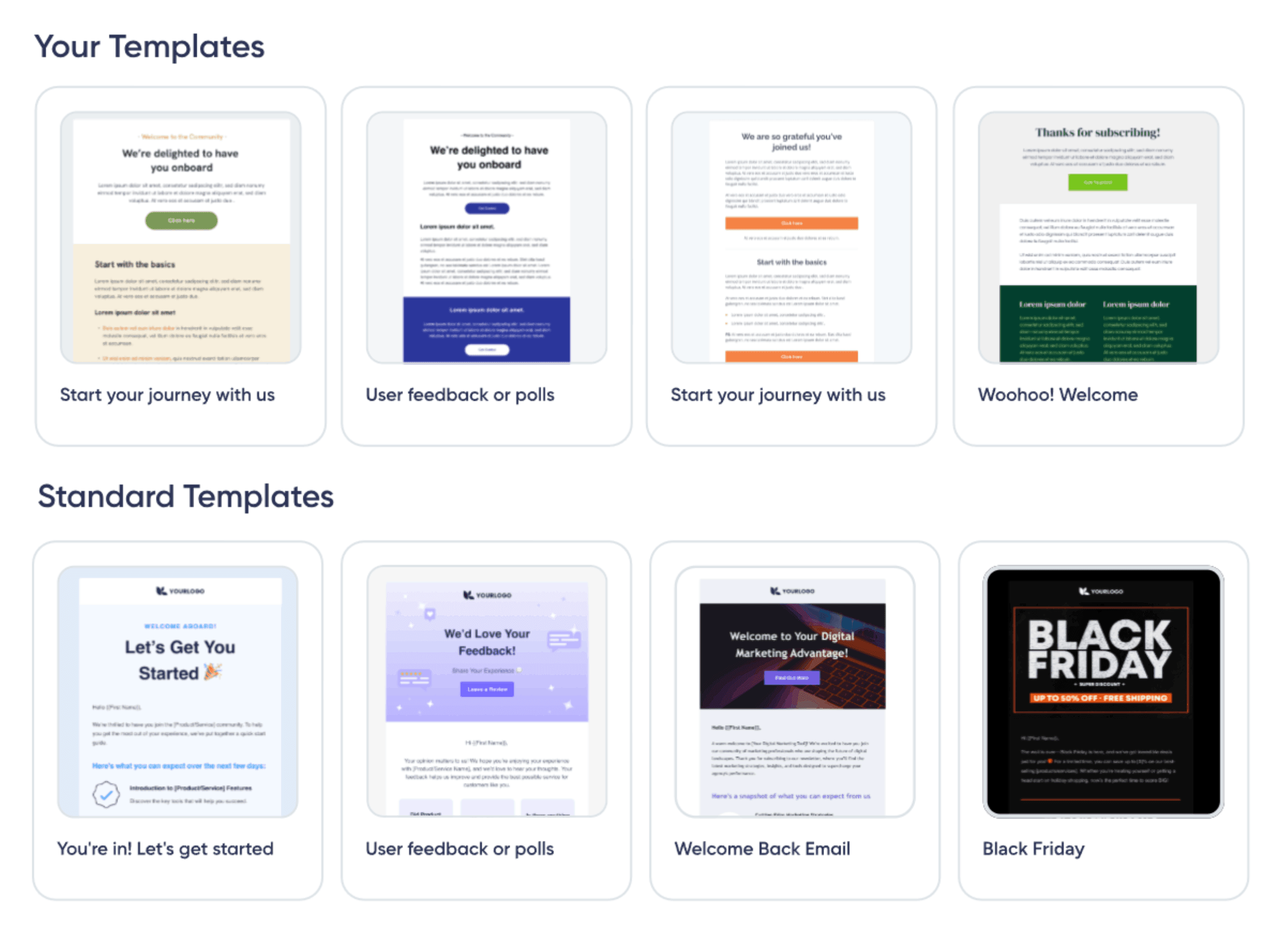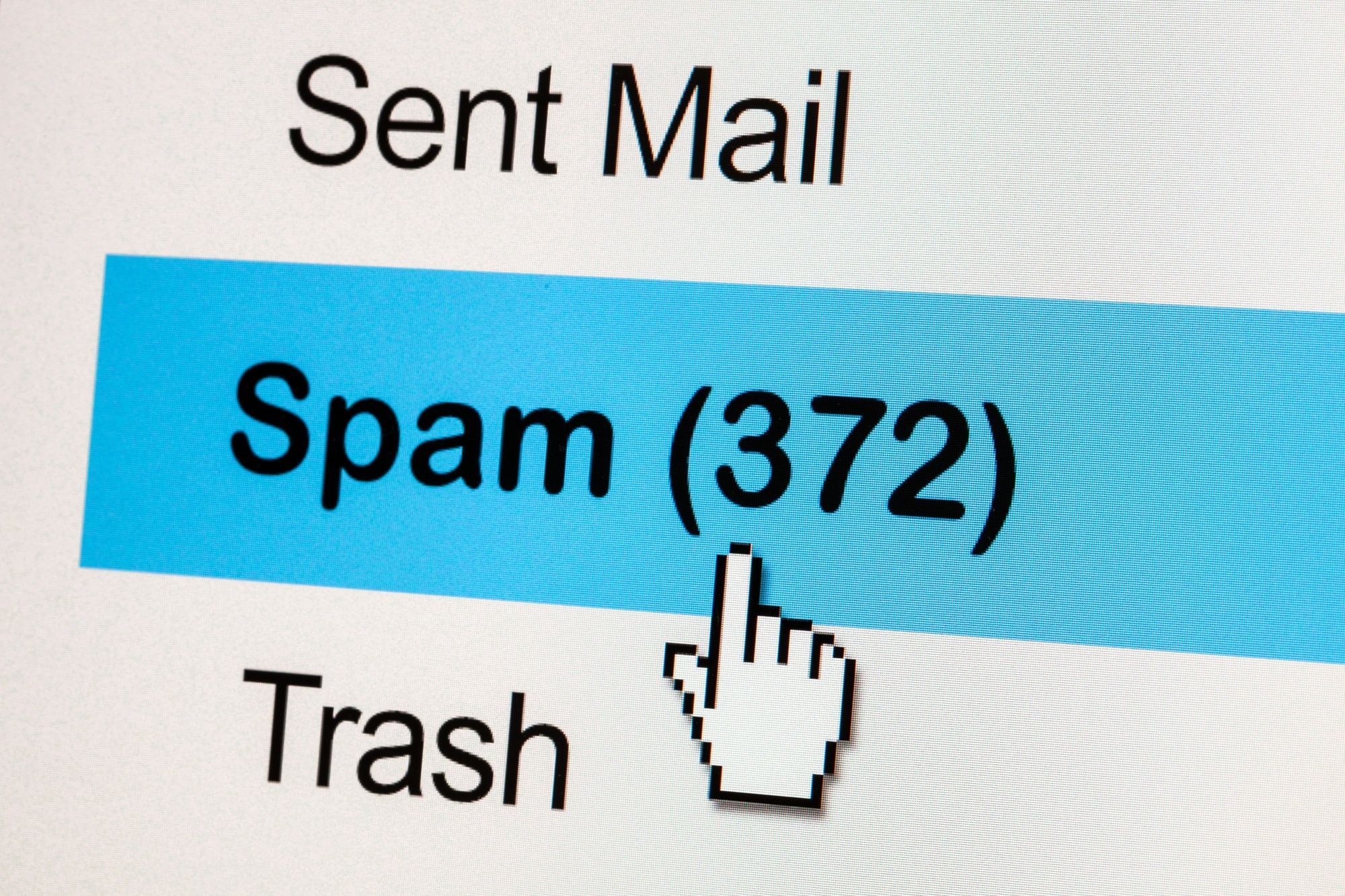Contents
the email tool that makes email marketing simple
How to Make a Good Email Newsletter
Published: March 28, 2025
We've all gotten emails that shout, “Buy this now!”—and they're usually the first we delete. If you run a small business or handle your own newsletter, you'll know exactly what I mean. A great newsletter isn't pushy; it's helpful. It builds trust, shares valuable tips, and makes real connections.
Inboxes are crowded and attention spans are short. If you want readers to genuinely look forward to your emails, your newsletter must solve real problems and be easy to read.
In this article, I'll share a few practical tips to help you create newsletters your audience loves opening. You’ll learn how to engage readers, offer value they appreciate, and boost loyalty without ever sounding pushy. Ready? Let’s start!
Know Your Audience
Every successful newsletter begins by understanding exactly who your readers are and what matters most to them. Before you write a single word, ask yourself: “What problems or challenges do my subscribers face every day?” People pay attention when your content directly addresses their struggles rather than simply promoting your products or brand.
Step into your readers' world to find out what they truly care about. Visit the places your audience spends time, like social media groups, niche forums, or blog comments. Notice how they speak, the questions they ask repeatedly, and the frustrations they express. This will give you insight into their real-world pain points—things like confusion, overwhelm, or uncertainty about what to do next.
Your newsletter should directly address these everyday challenges. Whether your readers want to save time, make smarter decisions, or learn helpful tips, your emails should consistently deliver practical solutions.
Clearly defining a niche for your newsletter makes your content feel more personal and highly relevant, further boosting reader engagement and loyalty. Also, explicitly segmenting your audience into groups based on their interests, experience level, or demographics helps you tailor your content more effectively. Beginners might prefer quick how-to guides, while advanced readers may value deeper insights or detailed case studies. Even small touches, like using their first name or referencing details specific to their industry, can make your newsletters feel more personal and less like mass communication.
By consistently solving your readers' real problems and tailoring content to their specific interests, your email newsletter will quickly become something your audience eagerly anticipates and trusts.
Provide Valuable Content
Great newsletters aren't email marketing sales pitches—they’re helpful conversations. Subscribers don't open emails hoping to see ads; they open them hoping to find something useful or interesting. If you consistently offer genuine value, your readers will come to see your newsletter as a trusted resource.
Focus on Reader-Centric Solutions
The best newsletters are reader-focused. At least 90% of your content should directly help your readers by solving their everyday problems, answering common questions, or offering valuable insights. Keep self-promotion minimal (around 10%), the recipient never feels like they're being constantly sold to.
Make sure each newsletter provides at least one helpful tip, practical how-to, or unique insight readers can immediately apply. Use insights from your subscribers’ interactions—like past purchases or previous clicks—to personalize future newsletters, making them feel even more relevant and valuable. When readers know your emails genuinely help them, they’ll eagerly open each new edition—and they’ll be much more receptive when you do occasionally mention your products or services.
Concise and Scannable Format
Readers are busy, and inboxes are packed. Respect your readers’ time by making your newsletters short, eye-catching, and easy to skim. Stick to one main topic or idea per email, and keep paragraphs short (two or three sentences max). Use clear subheadings and bullet points to highlight key takeaways.
If you find yourself wanting to add extra details to the newsletter content, stop and ask, "Does this truly add value?" If your newsletter requires longer explanations, provide a summary and link to a detailed blog post or article instead.
Finally, let your personality shine through. Whether it’s a touch of humor, a relatable story, or a unique insight, making your newsletter feel friendly and conversational will keep your subscribers engaged and looking forward to your next email.
Design and Layout
Your newsletter’s design shapes how readers experience your message. A clean, professional layout helps subscribers quickly find information, clearly understand your message, and easily respond to your call to action.
Clean, Mobile-Friendly Structure
The best newsletters are minimalist, uncluttered, and easy to scan—especially on mobile devices. Use clear, legible fonts, short paragraphs (2–3 sentences), and plenty of white space to avoid overwhelming your readers. Limit images to one or two that directly support your main message, optimizing them for fast loading. Always include descriptive alt text for accessibility. Ensure good color contrast and readable font sizes so all readers on your email list, including those with visual impairments, can comfortably read your newsletter.
Keep your overall design simple and balanced, making it effortless for readers to quickly grasp key points and comfortably interact with your content. Before sending, always preview your newsletter on smartphones to ensure it adapts well to small screens and remains readable without excessive scrolling or zooming.
Highlight One Clear Call to Action (CTA)
Every effective newsletter should guide the target audience toward a single, obvious next step—this is your call to action (CTA). Decide on the primary action you want readers to take, such as reading an article, signing up for a webinar, or viewing a product.
Make your ctas visually distinct by using a prominent button or highlighted link. Give them plenty of space, and avoid cluttering your newsletter with multiple competing actions. Focusing clearly on one main action for each CTA dramatically improves reader engagement.
Use Templates to Save Time and Stay Consistent
If you run a small business or manage your newsletter yourself, you probably don’t have the time to design emails from scratch. Newsletter templates are an ideal solution. They help you quickly create professional-looking newsletters, keep branding consistent, and free you up to focus on content your readers will appreciate.
Tools like Maildroppa offer ready-to-use, professional templates. Choose one that fits your brand, customize it once with your colors, logo, and style—and then reuse it for each newsletter. Templates save time and ensure subscribers instantly recognize your emails.
Quick Tips:
- Choose a clean, reusable template that matches your brand.
- Customize it once, then reuse it consistently.
- Always preview your template on mobile devices.
Using templates consistently improves engagement, saves time, and keeps your newsletters looking professional and familiar.
Read More
Build Engagement and Community
A successful newsletter goes beyond simply sending information; it creates a sense of belonging and encourages interaction. Readers don’t just want updates—they want to feel connected, heard, and supported. When your newsletter becomes a welcoming community, subscribers genuinely look forward to every issue.
Invite Conversation
Make your newsletters feel like conversations rather than announcements. At the end of each email, ask an open-ended question or prompt your readers to reply. For example, you might say, “What challenges are you facing right now?” or “Is there something specific you’d like us to cover next?”
Encouraging readers to respond transforms your newsletter into a dialogue, not a one-way broadcast. Plus, reader feedback gives you valuable insights into what matters most to your audience, helping you continually refine your content.
Offer Meaningful Extras
Show readers you appreciate their trust by occasionally providing extra value. Welcome new subscribers with a free resource like a how-to guide, checklist, or discount code. For example, if you run a fitness newsletter, give new subscribers a quick workout plan or meal-prep template. This gesture immediately demonstrates your newsletter’s practical value.
Also, reward loyal readers periodically with exclusive content, behind-the-scenes insights, or special offers. Extras like these reinforce the sense of community, making subscribers feel special, and valued, encouraging them to stay engaged long-term.
Additionally, make sure your newsletter sign-up form is simple and highly visible—ideally placed on your website’s homepage or sidebar. This will help new subscribers join easily and quickly become part of your community.
Quick Tips
- Regularly ask your readers for input to encourage a two-way conversation.
- Provide a valuable welcome gift to new subscribers.
- Keep your sign-up form simple, short, and clearly visible.
- Share occasional subscriber-only content or offers to reward loyalty and engagement.
By building genuine conversations, offering valuable extras, and making it easy to join, your newsletter becomes more than just an email—it becomes a thriving community that readers love being part of.
Read More
Community 101: Guide to Building, Nurturing, and Sustaining Community
Consistency and Scheduling
Consistency isn't just about routine; it builds trust and credibility with your readers. When subscribers know exactly when they'll receive your newsletter, they anticipate and value your emails more.
Pick a sending schedule (weekly, bi-weekly, monthly) and stick to it. Tell subscribers exactly what they'll get and how often they'll get it, such as: “You’ll get helpful tips every Tuesday.” Meeting these expectations strengthens trust and reduces unsubscribes.
Use recognizable structures, like familiar sections such as a weekly tip or featured resource, so readers know exactly what to expect. As mentioned earlier, using a simple, branded template makes your newsletters instantly recognizable, saves you time, and reinforces professionalism.
Consistency doesn't mean your newsletters should become predictable or dull. Within your regular structure, you can still keep readers excited by occasionally sharing special content or surprises.
Quick Tips:
- Communicate your sending schedule when subscribers sign up.
- Stick to a predictable publishing rhythm.
- Use consistent templates and structures (see "Use Templates to Save Time and Stay Consistent" above).
- Balance consistency with fresh and engaging content.
Write Compelling Subject Lines
Your subject line is the gateway to your newsletter. If readers aren't intrigued immediately, they'll scroll past—or worse, unsubscribe. A strong subject line promises value, sparks curiosity, and builds trust.
Spark Curiosity or Urgency—But Stay Honest
Effective subject lines motivate readers to open by making them curious or creating urgency—but they must always deliver what they promise. Skip clickbait, vague wording, or exaggerated claims when you write a newsletter. Readers quickly lose trust if your subject line doesn't match what's inside.
Good examples include:
- "5 Easy Ways to Save Time Every Morning"
- "Free Guide: Plan Your Week in 10 Minutes"
- "Limited Spots Left—Reserve Yours Now!"
Personalize Your Subject Lines
Personalizing your subject lines by including the reader’s name or referencing their specific interests can significantly boost your open rates. Readers appreciate emails that feel tailored specifically to them, increasing engagement and loyalty.
Keep It Short, Clear, and Personal
Subject lines should be brief, specific, and instantly understandable. Readers should immediately grasp what benefit they'll get by opening your email. Using your personal name or a friendly sender name (like "Sarah from Maildroppa") also increases open rates by making emails feel more human and less like a marketing strategy.
Test and Improve Continuously
Experiment with different styles and wordings for your subject lines. Track your results to find out exactly what grabs your subscribers' attention, then use that knowledge to refine future newsletters.
Best Practices:
- Promise a benefit without exaggerating.
- Personalize subject lines using subscriber names or interests.
- Keep subject lines short, honest, and specific.
- Use a friendly sender name like "Your Name from Your Company" to make emails feel more personal and trustworthy.
- Regularly test different approaches to learn what resonates with your audience.
Read More
How to Write the Best Email Subject Lines
Keep Your Subscriber List Healthy and Engaged
A large subscriber count might feel impressive—but it only matters if your subscribers actually read your newsletters. Inactive subscribers hurt your open rates and can damage your sender reputation. When many subscribers don't open your emails, inbox providers might start marking your messages as spam, hurting deliverability for everyone.
To maintain a healthy list, regularly (every 2–3 months) review your email analytics. Identify subscribers who haven’t opened your newsletters for a few months and send them a friendly re-engagement email. For example:
"Hi there! We noticed you haven't opened our recent newsletters—are we still sending useful content your way? Let us know if there’s something you’d prefer, or feel free to unsubscribe if this isn’t relevant for you anymore."
This simple approach shows subscribers you value their experience, gives them an opportunity to reconnect, and allows them to easily unsubscribe if they prefer. Don’t worry about losing subscribers; fewer, more engaged readers will boost your open rates, strengthen your sender reputation, and improve your overall newsletter results.
Additionally, segmenting your audience helps identify which groups are most engaged and which ones may need different types of content or frequency adjustments. Segmentation makes it easier to send highly relevant content, improving subscriber engagement and helping prevent inactivity in the first place.
Quick Tips
- Regularly check your analytics for inactive subscribers.
- Send friendly emails asking inactive readers if they're still interested.
- Remove subscribers who remain inactive despite multiple attempts.
- Occasionally ask subscribers for feedback to keep your content relevant.
- Use audience segmentation to deliver more targeted content and identify groups needing extra attention.
- Make your unsubscribe link easy to find to respect subscribers’ preferences and maintain spam compliance.
Test and Refine Your Newsletter
Creating a newsletter doesn't stop after hitting "send." The best newsletters improve over time, driven by testing and feedback. Here’s how to refine yours:
Pre-Flight Checks
Preview your newsletter carefully before sending it to subscribers. Send test emails to yourself and a small group to spot issues early. Check carefully for formatting mistakes, broken links, or images that don’t load correctly. Make sure the email looks good across different devices and email clients, such as Gmail, Outlook, or Apple Mail.
Quick checks to perform before sending:
- Confirm formatting looks good on desktop and mobile devices.
- Test every link and button to make sure they're working.
- Check images and text layout carefully.
Fixing errors before your subscribers see them protects your brand’s professionalism and helps build trust.
A/B Testing and Analytics
Testing is the key to a continuously improving newsletter. A/B testing means comparing two versions of your newsletter (like different subject lines, images, or call-to-action buttons) to see which one performs better. For example, test two subject lines by sending each version to a small part of your list, then use the more successful one for everyone else.
Regularly check your email analytics after sending. Pay close attention to open rates, click-through rates, and any unsubscribes. These insights show what's resonating with your audience and what's not. Use that feedback to improve your next newsletters. Most importantly, always act upon the insights you gain—if a certain approach consistently works better, incorporate it into future emails to ensure continuous improvement and higher engagement.
Conclusion
Creating a great email newsletter is an ongoing process of knowing your audience, solving their real-world problems, designing for clarity, engaging readers consistently, and testing regularly to improve. Every newsletter is an opportunity to strengthen your relationship with subscribers and become a trusted resource they'll genuinely look forward to engaging with.
You don't have to tackle everything at once. Pick one or two new strategies—perhaps clearer subject lines, a stronger call to action, or sending a friendly re-engagement email to inactive subscribers—and apply them to your next marketing newsletter. Pay close attention to how readers respond, and let their feedback guide your next improvements.
Remember, the best newsletters aren't perfect immediately. They improve over time through careful refinement, experimentation, and listening to your audience. Now it's your turn—go ahead and create your best newsletter yet!




